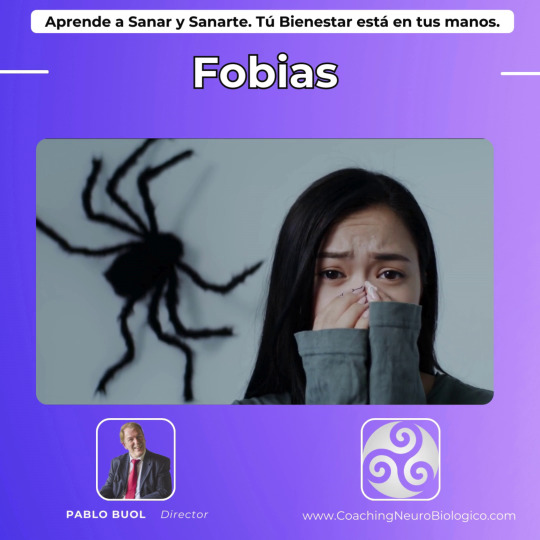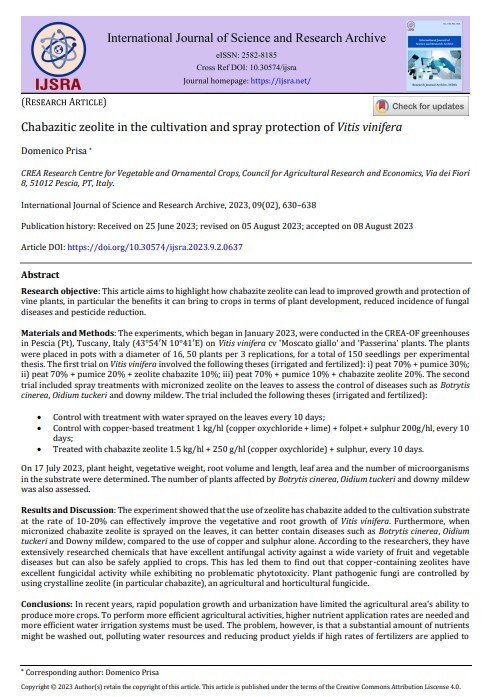#biologicas
Text
Yes it's form a conservative source. But it's one of the few articles that doesn't focus on reproductive purchasers who felt entitled to a child.
by Emma Waters, @EMLWATERS
Olivia Maurel was 30 years old when an ancestry DNA test confirmed what she had known all along: she is the product of a costly commercial surrogacy contract. In Olivia’s case, the woman that her parents paid to gestate and birth Olivia is also her biological mother.
In a recent article with Daily Mail, Olivia shared how “becoming a parent myself — entirely naturally, in my mid-20s — has only crystallized my view. The sacred bond between mother and baby is, I feel, something that should never be tampered with.” After going viral for her testimony before the parliament of the Czech Republic, Olivia now campaigns for the universal abolition of surrogacy.
In the United States, only three states prohibit or do not enforce commercial surrogacy contracts. One of the states, Michigan, is poised to overturn their ban on surrogacy-for-pay through a nine-bill “Access to Fertility Healthcare Package.” Legislators are tying their efforts to the national conversation on in vitro fertilization in hopes of garnering additional support. I detail the concerns with this legislation in detail here, but suffice it to say it undermines motherhood by reducing the intimate relationship between a woman and the child she carries to a highly-lucrative rental agreement.
Several well-respected researchers and pundits claim that surrogacy does not harm children. Yet we know very little about its long-term impact on a child’s psychological well-being.
Most of those who assert that surrogacy is psychologically harmless rely on a longitudinal study by Susan Golombok, Professor Emerita of Family Research, and former Director of the Centre for Family Research at the University of Cambridge. She is the author of We Are Family (2020), a synthesis of 40 years of research on non-traditional family structures—same-sex, single parent by choice, and the use of all forms of assisted reproductive technology, including third-party conception. She concludes that such arrangements pose no additional harm and can benefit children.
Professor Golombok’s “Families Created Through Surrogacy” study began in 2003 and assessed parental and child psychological adjustment at ages 1, 2, 3, 7, 10, and 14. The impact of this single longitudinal study on both public opinion and policy cannot be overstated. To date, it is the only study that specifically examines the surrogate-born child’s psychological adjustment, as well as the only study to do so over an extended period. It is also the only research on child psychological well-being that policymakers in New York used to argue for the legalization of commercial surrogacy.
Professor Golombok’s sample of surrogacy families comes from the General Register Office of the United Kingdom for National Statistics (ONS) and from the UK’s “Childlessness Overcome Through Surrogacy” (COTS) agency. The original sample included 42 surrogate-born children but declined to a mere 28 children by age 14. The study relied on a group of families formed through egg donation and children born of natural conception to serve as the comparison groups.
With such a small sample size, and some families participating inconsistently year-to-year, the study itself runs the risk of selection bias and non-representative outcomes. The study lumps both children born through gestational surrogacy and traditional surrogacy together, too. This means some surrogates are both the genetic mother and the child's gestational mother.
Additionally, only altruistic surrogacy is legal in the UK, so these arrangements do not involve surrogates who legally receive an additional sum of money, beyond generous reimbursements. For context, surrogacy-for-pay brings in an additional $25,000 to $70,000 in the United States, which may affect how a child views his or her conception, gestation, and birth.
In each study, the scholars rely on the mother’s own assessment of the child’s well-being. It is not until age 14 when scholars begin to directly ask children questions to assess their self-esteem.
Overall, Professor Golombok concludes that children born from surrogacy agreements of any sort do as well, if not better, psychologically than their natural-born peers.
For ages 1, 2, and 3, Professor Golombok finds that parents in surrogacy families showed “greater warmth and attachment-related behavior” than natural-conception parents. One explanation for this, as Professor Golombok’s notes, is that “parents of children born in this way [may] make a greater attempt than parents of naturally conceived children to present their families in the best possible light.” Such a bias seems likely, given that parents may feel the subconscious desire to justify their uncommon path to parenthood.
By age 7, both surrogate-born children and donor-conceived children in the control group were doing noticeably worse than their natural-born counterparts. This is the point when many children learned of their biological or gestational origins. The scholars note that this corresponds with adoption literature as the period in a child’s life when they begin to comprehend the loss of one or both biological parents. What goes unnoted, however, is that unlike adoption, surrogacy is the intentional creation of a child for the express purpose of removing the child from his or her gestational and/or biological parent(s).
Beginning at age 10, scholars report that the child’s psychological adjustment returns to a relatively normal state compared to the natural-born children, but the study itself reports little data compared to previous papers. By age 14, when the study concludes, the remaining 28 children seem to fare about the same as natural-born children, despite slightly more psychological problems reported.
Despite these methodological limitations, Professor Golombok’s data from this longitudinal study remains the basis of child psychological adjustment research on surrogacy. Examples of this may be found in prominent pieces such as Vanessa Brown Calder's review of surrogacy at the Cato Institute or Cremieux Recueil's widely shared Substack with Aporia Magazine. Their conclusions that surrogacy confers “no harm” to the psychological well-being of the child are premature, to say the least.
In Calder’s article, she cites three studies in her discussion on the psychological well-being of surrogate-born children. A quick review of each study shows that these authors rely solely on Professor Golombok’s longitudinal study data to draw their conclusions.
In Recueil’s Substack, "Surrogacy: Looking for Harm," he primarily relies on Golombok’s work to claim that “psychological harm appears to be minimal.” Again, this statement is premature and formed on limited data primarily from her longitudinal study. The other five citations in the “Psychological Outcomes for Kids” section tell us little about the psychological well-being of surrogate-born children.
Recueil twice cites “Are the Children Alright? A Systematic Review of Psychological Adjustment of Children Conceived by Assisted Reproductive Technologies,” from 2022. Of the 11 studies that examine the intersection between surrogacy and child psychological outcomes, they fall into three categories:
the longitudinal study by Professor Golombok
child outcomes compared with other children born from assisted reproductive technology, not compared with natural-born children
studies that examine the impact of non-traditional parenting types, such as lesbian mothers or gay fathers, on the well-being of the child. The impact of surrogacy is not directly assessed; it is simply mentioned as a requirement for male-to-male family formation. Of these three categories, the only studies that directly address the claims that Recueil makes are the research of Professor Golombok, which he already cited before these additional studies.
Hence, the widespread claim that surrogacy does not harm the psychological well-being of children primarily relies on a single longitudinal study of 42-to-28 surrogate-born children by the intended mother’s own assessment. That’s it.
This isn’t to say we should discard Professor Golombok’s study. But honest scholars and lawmakers should be far more modest in claiming that surrogacy does not harm the psychological well-being of children.
The most accurate conclusion regarding the psychological adjustment of surrogate-born children is that we do not have enough data to draw a conclusion either way, especially not in favor of surrogacy itself. When the well-being of children is at stake, lawmakers and researchers should employ the utmost scrutiny before advocating for any form of childbearing.
Children rightly desire to please their parents, and there are few conversations more complicated than questioning the method one’s parents chose to bring one into the world. There is reason to believe that many surrogate-born children will not have the emotional or mental maturity to understand their conception and gestation until they are much older.
There is a huge difference between no harm and no known harm. Regardless of one’s stance on surrogacy, we should be able to agree that we need more data and reporting requirements to enable researchers to assess the impact of surrogacy contracts on the well-being of children. In my view, a single six-part longitudinal study does not justify this practice.
Emma Waters is a Senior Research Associate for the Richard and Helen DeVos Center for Life, Religion and Family at The Heritage Foundation.
#Anti surrogacy sunday#Surrogacy exploits women#Babies are not commodities#Surrogacy is human trafficking#michigan#Access to Fertility Healthcare Package#General Register Office of the United Kingdom for National Statistics (ONS)#Childlessness Overcome Through Surrogacy” (COTS)#Surrogacy is the intentional creation of a child for the express purpose of removing the child from his or her gestational and/or biologica#Small sample size for a study#The results are based on answers given by a biased parent#We need more studies before experts can say weather or not surrogacy impacts children#There is a huge difference between no harm and no known harm
14 notes
·
View notes
Text
(tw: niche brazil post that makes sense to me only) au where the sumeru akademiya is the university of são paulo
#alhaitham aluno da letras....... kaveh aluno da fau........ meet cute na florestan fernandes#can love really bloom between a fflch boy and a fau boy#cyno da química e tighnari da biologicas..
11 notes
·
View notes
Text
Me parece re loco que alguien totalmente ajeno a vos y tus problemas pueda venir y decirte "eehh vos sabes que la familia no se elige no? Hay que aceptarlos y quererlos como son 😁" sabes qué carlitos? Tenes razon, acepto que son radioactivos y los puedo querer. Lejos, bieeeen lejos de mi.
#y tecnicamente la familia se elige. uno elige si quiere tener una familia o no. biologica o no#brain storms
5 notes
·
View notes
Text
“ La mattina del 3 marzo 2004 la porta 537 si aprì e Kelly Warfield uscì dalla Segreta. La aspettavano nella sala d’attesa la madre e il figlio (per cui aveva ottenuto un permesso speciale), che andò a casa con lei. Il pomeriggio di quello stesso giorno ritornò all'USAMRIID*, dove i colleghi organizzarono una festa di fine isolamento, con tanto di discorsi e palloncini colorati. Parecchi mesi più tardi, dopo un periodo di sospensione, una lunga serie di analisi del suo sistema immunitario, di esami e supervisioni al limite dell'offensivo, oltre a una certa insistenza da parte sua, ottenne nuovamente il nullaosta per entrare nei laboratori di livello 4. Poteva tornare a stuzzicare la bestia che avrebbe potuto ucciderla.
«Non ha mai pensato di non tornare a lavorare su Ebola?» le chiesi.
Rispose di no.
«Perché le piace tanto il suo lavoro?».
«Non lo so di preciso» disse, e si fermò un attimo a riflettere. «Perché proprio Ebola? In fondo fa al massimo un centinaio di vittime all'anno». Non è una malattia di impatto globale e nonostante i toni apocalittici di certi autori è probabile che non lo diventerà mai. Per Warfield l’interesse aveva basi scientifiche. Per esempio, era affascinata dal fatto che un organismo tanto semplice fosse tanto letale. Ha un genoma minuscolo, quanto basta per costruire le sole dieci proteine che servono a formare le strutture di sostegno e a farlo replicare (un herpesvirus, per contro, ha una complessità genetica circa dieci volte superiore). Nonostante ciò il virus Ebola è feroce, capace di uccidere un uomo in soli sette giorni. «Come può una cosa così insignificante e rudimentale essere così orribilmente pericolosa?» si chiedeva Warfield. «Lo trovo davvero affascinante». “
* Istituto di ricerca sulle malattie infettive dell’esercito statunitense: un laboratorio per la guerra biologica riconvertito alla ricerca sulle malattie e sulle biodifese con sede nel Maryland.
---------
David Quammen, Spillover. L’evoluzione delle pandemie, (Traduzione di Luigi Civalleri; collana La collana dei casi), Edizioni Adelphi, 2014.
[ Edizione originale: Spillover. Animal Infections and the Next Human Pandemic, W.W. Norton & Company, Inc., 2012 ]
#David Quammen#Luigi Civalleri#pandemie#epidemie#saggi#divulgazione scientifica#scienza#saggistica#citazioni#ebola#malattie infettive#biologia#divulgazione#USAMRIID#letture#guerra tossicologica#guerra biologica#armi biologiche#NATO#scienze naturali#libri#leggere#Covid#Coronavirus#USA#Stati Uniti d'America#zoonosi#spillover#COVID-19#virus
16 notes
·
View notes
Text
El lupus es una enfermedad de la piel que afecta principalmente a las mujeres. Se caracteriza por manchas rojas que se escaman, localizadas principalmente en la región del rostro, aunque también puede afectar a cualquier órgano.
El lupus eritematoso sistémico (LES o lupus) es una enfermedad autoinmune crónica que afecta al tejido conjuntivo, caracterizada por inflamación y daño de tejidos mediado por el sistema inmunitario, específicamente debido a la unión de anticuerpos a las células del organismo y al depósito de complejos antígeno-anticuerpo.
El LUPUS indica que la persona que lo padece se está autodestruyendo. Desarrollo un lupus cuando vivo un gran desanimo, odio o tengo vergüenza de mí, lo cual hace que se debilite mi sistema de defensa.
Mi malestar muy frecuentemente tiene su origen en una culpabilidad emocional profunda que me roe interiormente. Prefiero castigarme en vez de afirmarme. Bajo los brazos, me rindo porque tengo la sensación de que no hay salida posible, ninguna solución y puedo vivir frustración frente a mi impotencia. La muerte es una escapatoria y rehúso aceptar el amor y el perdón hacía mí mismo o hacía los demás.
CONFLICTO: No merezco existir. Conflicto de desvalorización de la parte afectada.
RESENTIR: “Lo he pasado mal toda mi vida”. «No merezco existir». «Todo lo malo me sucede a mí».
Para tener una actitud tal de autodestrucción, debes haber tenido un inicio difícil en la vida, pero nunca es demasiado tarde para retractarte de tu decisión de que la vida no merece ser vivida.
Toma tiempo para dilucidar lo que quieres realmente y decídete a lograrlo. Un paso a la vez puede llevarte lejos. Si te diriges hacia lo que quieres, aun cuando sea despacio, encontrarás la razón de ser que buscas.
Volver a aprender a amarme constituye una etapa importante, incluso esencial, a mi curación.
TUS DOLORES Y SÍNTOMAS FÍSICOS MUESTRAN LOS CONFLICTOS DE TU VIDA QUE NO HAS RESUELTO. TE ENSEÑAMOS A ESCUCHAR A TU CUERPO, PARA DETECTAR Y RESOLVER TUS CONFLICTOS.
Un síntoma o enfermedad indica que se ha vivido un impacto conflictivo al que el inconsciente responde con un programa de adaptación.
¿QUIERES APRENDER A SANAR LOS CONFLICTOS OCULTOS QUE PROMUEVEN LAS ENFERMEDADES Y SÍNTOMAS FÍSICOS?
Te ofrecemos un programa único, de Sanación Personal y Formación Profesional, con las más modernas técnicas para promover la sanación integral de las personas: Tanto a nivel físico, emocional, mental, espiritual y actitudinal.
Diplomado de formación profesional en Coaching NeuroBiológico, con certificación internacional.
Solicita la información!
#lupus #biodescodificacion #descodificacionbiologica #descodificacionemocional #biodecodificación #enfermedad #autoinmune
#biodescodificacion#biodescodificación#descodificacion biologica#coaching de salud#biodecodificacion#escuela de coaching
3 notes
·
View notes
Text
En mi clase de hoy (BABICH - Bases Biológicas del comportamiento humano), la mitad o un poco más faltó, una compañera se retiró temprano y todo por el partido de Perú - Brasil.
El descanso que da el profe es de media hora. Andan viendo el partidos desde una laptop, y algo me dice que lo que queda de clase van a ver el partido.
¿Cómo le digo al profe que quiero hacer clase?, lloro.
5 notes
·
View notes
Text
Vincenzo cerca sua figlia❤️
Vincenzo scrive,
cerco mia figlia biologica, si chiama Angela, nata a Erice il 5 Settembre 2005 in provincia di Trapani.Era in comunità alloggio Miosotide Partinico (PA).
Vi chiedo di condividere il più possibile il mio appello affinché possa ritrovare mia figlia Angela.
Grazie

View On WordPress
2 notes
·
View notes
Text
Convegno Myplant Milano
Domani si parte per Milano per la presentazione al Myplant, una piccola parte riguarderà anche gli studi su selezioni microbiche che sto facendo su cactus e succulente. Microrganismi utilizzati per la stimolazione della Rosellina Ragionieri
cactus #succulente #studi #innovazioni #rosa

View On WordPress
2 notes
·
View notes
Text

mood: listening and reproducing messages from the universe


#magic music#conecting people#electrica#magnetica#electromagnetica#ordenadores biologicos#tecnologia biologica#frecuencias#vibraciones cosmicas#transmutando energias#bioresonance#sonidos binaurales#cosmicfire#heartist#aprendemosjuntxs#maktub
3 notes
·
View notes
Text
"Reserva Biológica Huilo Huilo: Guía de Viaje y Consejos Útiles"
En el alma vibrante de Chile se esconde Huilo Huilo, una joya de biodiversidad y aventura. Este enclave místico no es solo un destino, sino un portal a un mundo donde la naturaleza domina con majestuosidad y el espíritu aventurero se despierta. Prepárate para ser guiado a través de paisajes de ensueño, descubrir secretos culinarios escondidos, y encontrar el alojamiento perfecto en un lugar donde…

View On WordPress
0 notes
Text
COME SI SONO SVILUPPATE LA DOMESTICAZIONE BIOLOGICA E LA GLOBALIZZAZIONE ALIMENTARE
COME SI SONO SVILUPPATE LA DOMESTICAZIONE BIOLOGICA E LA GLOBALIZZAZIONE ALIMENTARE
L'archeologo Xinyi Liu della Washington University di St. Louis ha collaborato con Martin Jones dell'Università di Cambridge per una recente ricerca su come la scienza della domesticazione biologica si colleghi alle prime fasi della globalizzazione alimentare.
Liu propone un nuovo quadro concettuale per...
L’archeologo Xinyi Liu della Washington University di St. Louis ha collaborato con Martin Jones dell’Università di Cambridge per una recente ricerca su come la scienza della domesticazione biologica si colleghi alle prime fasi della globalizzazione alimentare. L’articolo è stato pubblicato sulla rivista Proceedings of the National Academy of Sciences (PNAS).
Liu, docente di archeologia e…

View On WordPress
#domesticazione biologica#globalizzazione alimentare#inyi Liu#Martin Jones#miglio Panicum miliaceum L.#Università di Cambridge#Washington University
0 notes
Text
Nadadores trans prefieren competir contra mujeres y rechazan nueva categoría
La categoría “Open” no tendrá participantes en la Copa Mundial de Natación en Berlín, y que estaba destinada a deportistas que se identifiquen con el sexo opuesto al nacer. Lo cual envía un fuerte mensaje relacionado a los triunfos que vienen consiguiendo en competencias contra mujeres
por Oriana Rivas
World Aquatics había establecido que los deportistas trans elegibles “necesitarían estar…

View On WordPress
#Autor Oriana Rivas#Categoría "Open"#Competir contra mujeres#Copa Mundial de Natación en Berlín#Deportistas transgenero#Panam Post#Ventaja biologica
0 notes
Text
youtube
Watch the American Climate Leadership Awards 2024 now: https://youtu.be/bWiW4Rp8vF0?feature=shared
The American Climate Leadership Awards 2024 broadcast recording is now available on ecoAmerica's YouTube channel for viewers to be inspired by active climate leaders. Watch to find out which finalist received the $50,000 grand prize! Hosted by Vanessa Hauc and featuring Bill McKibben and Katharine Hayhoe!
#ACLA24#ACLA24Leaders#youtube#youtube video#climate leaders#climate solutions#climate action#climate and environment#climate#climate change#climate and health#climate blog#climate justice#climate news#weather and climate#environmental news#environment#environmental awareness#environment and health#environmental#environmental issues#environmental justice#environment protection#environmental health#Youtube
15K notes
·
View notes
Text

SENTIDO BIOLÓGICO: Solucionar un gran temor. Protegerme de un miedo irracional, relacionado con la muerte, que identificamos con eso a lo que tememos. El temor puede haber sido experimentado personalmente, pero abundan las fobias que tienen su origen en temores experimentados por ancestros (transgeneracional, programa heredado) o por la madre durante el proyecto sentido.
CONFLICTO: Las fobias son miedos cristalizados y automatizados.
ACROFOBIA (miedo a las alturas): Sentirse sin nada y sin referencias. “Siento que no tengo donde apoyarme”. “Estoy en una etapa de transición, estoy al borde del precipicio”.
AGORAFOBIA: Conflicto en el vientre de la madre. “Estoy bien en el vientre de mi madre, pero percibo un gran peligro fuera”. Ambiente familiar conflictivo. Existe un exceso de responsabilidad en los agorafóbicos. “No me meto en situaciones que no puedo controlar”, “Si pasa algo, nadie va a poder ayudarme”.
ARACNOFOBIA: Deseo inconsciente de escaparse a vivir en el mundo con miedo a ser atrapado, encerrado en una telaraña por una madre asesina, asfixiante, paralizante. Miedo de ser envenenado dentro del clan.
AVIONES: Miedo relacionado con la independencia o con los muertos.
AVISPAS: Conflicto de violencia y de emboscadas.
CLAUSTROFOBIA: Memoria de miedo por alguna situación conflictiva en el útero materno o en el parto: No poder salir, cesárea, parto peligroso, o asfixia por vuelta de cordón. Buscar también en el transgeneracional, memorias de miedos en relación a la muerte por encierro, o sin posibilidad de escapar (campos de concentración o exterminio) o a ser enterrado vivo.
FOTOFOBIA: Conflicto con la luz, con el padre (sol).
MOSCAS: Miedo a ser devorado por los gusanos, miedo a la muerte.
NICTOFOBIA (miedo a la oscuridad): Conflicto de abandono (en el proyecto sentido). Si no tengo una luz no puedo guiarme y me pierdo porque estoy solo. Conflicto de miedo a las propias sombras que no deseo iluminar.
PÁJAROS: Miedo a los vuelos y a los robos.
XENOFOBIA: Conflicto del invasor: “Nosotros les invadimos y matamos, ahora ellos querrán hacer lo mismo con nosotros”. O culpabilidad por haberse dejado invadir.
#fobias #claustrofobia #agorafobia
0 notes
Text
El Arte Como Solucion Al Aburrimiento Y Valoración Del Tiempo:
En un mundo donde la inmortalidad biológica pudiera ser alcanzada, la noción del tiempo tomaría un nuevo significado. Con una perspectiva de vida que se extiende indefinidamente, el peligro del aburrimiento y la monotonía se volvería una preocupación real. Aquí es donde el arte entra en juego de manera crucial.
El arte, en sus diversas formas, es una vía única para abordar el aburrimiento y darle un propósito a nuestras vidas infinitas. Al involucrarnos en la creación y apreciación artística, exploramos los confines de la imaginación humana y encontramos un medio para expresar nuestras emociones, pensamientos y experiencias en formas que trascienden el tiempo. Desde la pintura y la música hasta la literatura y la danza, cada forma de arte nos ofrece un portal hacia un mundo de posibilidades ilimitadas.
La creación artística no solo combate el aburrimiento, sino que también nos permite examinar y reexaminar nuestra identidad en constante evolución. A medida que pasan los siglos, nuestras percepciones y valores pueden cambiar, y el arte proporciona un medio para documentar y comprender estas transformaciones. Al apreciar y participar en el arte a lo largo del tiempo, pudimos rastrear nuestras propias trayectorias personales y colectivas, proporcionar una conexión con nuestros ancestros y descendientes.
Además, el arte se convierte en una manera de valorar el tiempo en un mundo inmortal. Cada obra de arte, ya sea una pintura centenaria o una composición musical antigua, representa una ventana al pasado. Nos permite experimentar las emociones y las perspectivas de quienes llegaron antes que nosotros. Del mismo modo, nuestras creaciones artísticas podrían impactar a generaciones futuras, dejando una huella imborrable en el tejido del tiempo.
En última instancia, el arte ofrece una solución al aburrimiento y una forma de dar sentido al tiempo en un escenario de inmortalidad biológica. A través de la creatividad y la expresión, podemos llenar nuestros días con significado, explorar nuestra evolución continua y contribuir a un legado que perdure más allá de nuestra propia existencia. Así, el arte se convierte en el compañero constante en nuestro viaje a través de los siglos, enriqueciendo y dignificando nuestra experiencia eterna.

0 notes
Text
Lady Johanna busca a su madre biológica ‼️

View On WordPress
0 notes
Text
Chabazitic zeolite in the cultivation and spray protection of Vitis vinifera
Domenico Prisa
*CREA Research Centre for Vegetable and Ornamental Crops, Council for Agricultural Research and Economics, Via dei Fiori 8, 51012 Pescia, PT, Italy. Research ArticleInternational Journal of Science and Research Archive, 2023, 09(02), 630–638.Article DOI: 10.30574/ijsra.2023.9.2.0637DOI url: https://doi.org/10.30574/ijsra.2023.9.2.0637Publication history: Received on 25 June 2023;…

View On WordPress
#agricoltura biologica#balco#biostimolante#chabasite#chabazite#verdi#vignatech#vite chabasite#vitis vinifera#zeolite#zeolite-italia
0 notes
Text
youtube
Watch the 2024 American Climate Leadership Awards for High School Students now: https://youtu.be/5C-bb9PoRLc
The recording is now available on ecoAmerica's YouTube channel for viewers to be inspired by student climate leaders! Join Aishah-Nyeta Brown & Jerome Foster II and be inspired by student climate leaders as we recognize the High School Student finalists. Watch now to find out which student received the $25,000 grand prize and top recognition!
#ACLA24#ACLA24HighSchoolStudents#youtube#youtube video#climate leaders#climate solutions#climate action#climate and environment#climate#climate change#climate and health#climate blog#climate justice#climate news#weather and climate#environmental news#environment#environmental awareness#environment and health#environmental#environmental issues#environmental education#environmental justice#environmental protection#environmental health#high school students#high school#youth#youth of america#school
15K notes
·
View notes